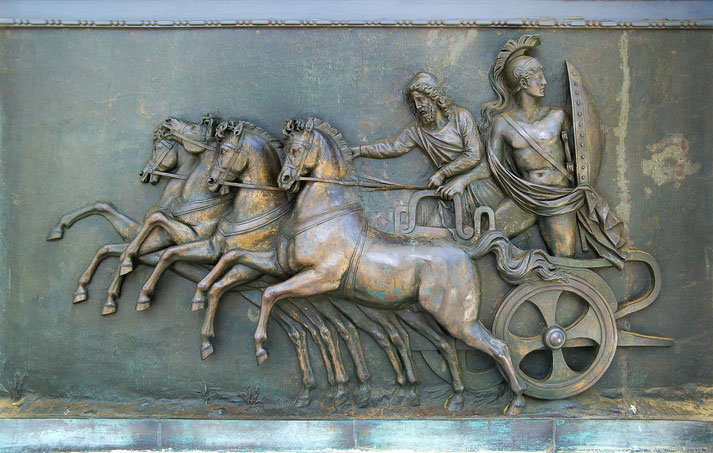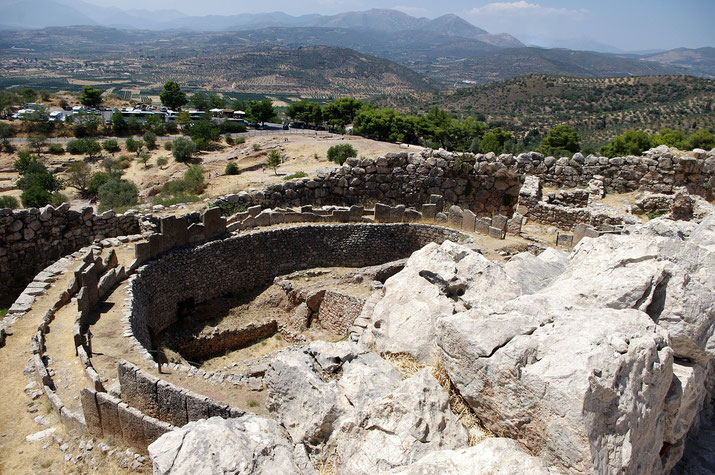Heinrich Schliemann: The genius discoverer of Troy or archaeology's greatest conman?

In the late 19th century, a wealthy German businessman, called Heinrich Schliemann, undertook a quest to uncover the legendary city of Troy.
As a child, he had become fascinated by the epic tales of Homer and the Trojan War. As a result, he had a deep desire to find out if the tales were true, and whether the lost city described in the Iliad had existed.
His relentless pursuit led him to the ancient ruins at Hissarlik in present-day Turkey, where Schliemann began excavations that unearthed astonishing artifacts and ancient treasures.
His discoveries would transform the field of archaeology but would also anger generations of archaeologist that followed him.
Early life
Heinrich Schliemann was born in 1822 in the town of Neubukow, in Mecklenburg-Schwerin, Germany,
Schliemann's father, a modestly earning pastor, struggled to keep his family afloat.
However, he wanted to instill a love of learning and literature in his children. So, Schliemann's mother would read to him regularly.
The book that most captivated him from a young age was the ancient stories of the Trojan War, which was told in the ancient Greek book known as The Iliad, which was believed to have been written by the ancient Greek poet Homer.
The tales of great heroes fighting in front of the giant walls of the great city of Troy had a deep impact on the young Schliemann.

As he grew older, he vowed that if he ever was able to, he would find the lost city of Troy.
When he had completed his schooling, however, Schliemann did not become an archaeologist or a historian.
Instead, he took on various roles in businesses and focused on earning money. This took him to various places across the globe, and Schliemann made significant fortunes through a range of business ventures.
These included being a general merchant, a banker, and a military contractor during the Crimean War.
During this time, Schliemann also became fluent in numerous languages including English, French, Spanish, Dutch, Italian, Russian, Arabic, and Turkish.
While this was done in order to improve his business dealings with people from different countries, it would also become a crucial aid to his future archaeological endeavors.
Later, he settled in St. Petersburg, Russia, where he successfully established a business importing German goods into Russia.
By this stage, he had become quite wealthy and could turn his attentions to following his dreams.
So, in 1868, Schliemann took a journeyed throughout Greece and Turkey to see if he could find the site of Troy.
While in Turkey, he had made inquiries about potential ancient sites and it was brought to his attention that a nearby ancient site called Hissarlik, could be a potential location.
Before Schliemann's arrival, the British archaeologist Frank Calvert had already conducted preliminary excavations on the top of the hill at Hissarlik.
However, Calvert had not found anything conclusive to link it to the ancient tales of Troy.
Nevertheless, Schliemann postulated that if it was the city of Troy, any useful evidence would be found on the lower slopes of the hill, not at the top.
So, even though Schliemann did not have formal academic training in archaeology, he declared that he would begin digging at Hissarlik to determine if it really was the ancient city of Troy.
Schliemann's excavations at Hissarlik
In 1871, Schliemann began the first of his excavations at Hissarlik. He didn't work alone but paid for a team of local workers to help remove the thick layers of dirt and debris at the site.
Unfortunately, the pace of the digging was slow, and Schliemann grew impatient. To help speed up the process, he purchased several cases of dynamite.
The detonation of these explosives did create much larger craters in a very short space of time but caused untold damage to large sections of the excavation site.
Even at the time, his excavation methods were criticized for their hastiness and destructiveness.
Schliemann was undeterred and kept digging. Eventually, his team revealed several layers of occupation at the site.
This proved that Hissarlik had been a great city that had a history that stretched back at least 5000 years.
The different layers showed that the city had been built, destroyed, and rebuilt, more than seven times in its long history.
At each layer, Schliemann discovered numerous artifacts, including pottery, weapons, and jewelry.
Schliemann was excited to discover a Bronze Age layer of occupation, which he believed was the remains of the city of Troy that matched Homer's tales.
Digging deeper, he discovered an even older city, known as Troy II, which dated back to around 3000 BC.
Wilhelm Dörpfeld, a German architect and archaeologist who was working with Schliemann at Troy and later clarified the stratigraphy of the site, identifying nine major layers of occupation.
While Schliemann initially identified the layer known as "Troy II" as the Troy of Homer's tales, it is now generally accepted that the city associated with the Trojan War is more likely to be layer "Troy VIIa".

The most famous find from this period is the so-called "Treasure of Priam", which Schliemann discovered.
It was named this by Schliemann because Priam was the king of Troy mentioned in The Iliad.
It consisted of a series of gold and silver objects like jewelry, weapons, and armor.
Despite Schliemann's excitement at the discovery of the treasure, its connection to King Priam, the ruler during Homer's Trojan War, is questionable, as the treasure is thought to come from a level predating the traditional time of the conflict.
However, the treasure became the cause of an international scandal. Rather than reporting his find to the Turkish government, as Schliemann had promise, he quickly smuggled it out of Turkey and sent back to Germany.
When Schliemann shared the news of the find, he had second wife, Sophia Engastromenos, photographed wearing the 'Treasure of Priam'.
When the authorities in Turkey were alerted to the removal of the treasure, they initiated a lengthy legal battle over the ownership of the artifacts and ordered its return to the country.
Sadly, they never won this fight and it remain in Germany. However, following the seizure of Berlin during World War II by Soviet forces, the treasure was taken to Russia, where it remains to this day.
Schliemann's discoveries at Mycenae
Having angered the Turkish government, Schliemann decided to move his excavations elsewhere.
Since he was now confident that he had found the site of Troy, he explore various Mediterranean sites that were also mentioned by Homer.
In 1876, Schliemann announced he would begin digging at the site of Mycenae in Greece, which another ancient city featured in Homer's works.
Others had conducted smaller excavations at the city in the past but had not revealed many discoveries.
However, for Schliemann, it was another place that he was passionate about, since Mycenae was the home of one of the great Greek heroes in the tale called Agamemnon, who had led the Greeks during the Trojan War.
After a season of excavating the site, he claimed to have found the palace of Agamemnon himself.
Many archaeologists were very skeptical of his claim, as the palace structure unearthed showed clear signs of being from a later period.

Also, Schliemann excitedly announced that during the dig at Mycenae, he also unearthed a solid gold mask in a burial pit.
He quickly called it the 'Mask of Agamemnon', since he claimed it had belonged to the legendary Greek king.
However, many people at the time pointed out that there was no evidence at all that it was directly linked to that historical figure.
Regardless, Schliemann's repeated finds, and his success at promoting his discoveries, made him an international celebrity.
He published his findings in several influential books, including 'Trojanische Alterthümer' (1874) and 'Mycenae' (1878), which helped popularize his discoveries.
While he undertook a number of other archaeological works during his time, it was his excavations at Hissarlik and Mycenae which had the longest impact on his fame and career.
Schliemann would die in December 1890 at the age of 68 while in Naples, Italy.
Controversy surrounding Schliemann's work
As famous and influential as Schliemann's work was, it has been the constant subject of debate.
Many of his critics have argued that his unscientific methods and focus on treasure hunting resulted in substantial archaeological losses.
In particular, his use of dynamite at Troy was unspeakably destructive and led to significant archaeological damage, particularly to later layers of the site.
The loss of fragile archaeological data and even some artifacts is considered unforgivable by scholars.
In addition, a number of people were frustrated at how quickly Schliemann had concluded that each of his finds were directly linked with famous people in the story of Troy by Home.
Modern archaeologists have pointed out that the dates of each of the items are not consistent with the time period of the war and could not possibly be what Schliemann claimed they were.
So, while there's no concrete evidence to suggest Schliemann forged any archaeological finds, his interpretations have often been contested.
Yet, Schliemann remains an important figure as he proved that some ancient texts, such as Homer's poems, could help guide the discovery and excavation of ancient sites.
In this way, his work at Troy and Mycenae laid the groundwork for later archaeological practices that emphasized the importance of linking literary sources with archaeological evidence.
Further reading
What do you need help with?
Download ready-to-use digital learning resources
Copyright © History Skills 2014-2025.
Contact via email
With the exception of links to external sites, some historical sources and extracts from specific publications, all content on this website is copyrighted by History Skills. This content may not be copied, republished or redistributed without written permission from the website creator. Please use the Contact page to obtain relevant permission.





